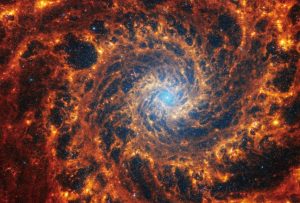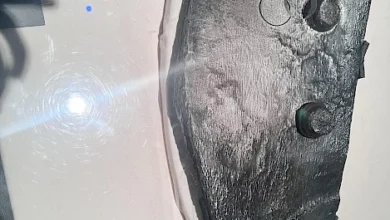The JWST telescope received new images of spiral galaxies

 Recent observations from the James Webb Space Telescope (JWST) have yielded surprising results regarding spiral galaxies. The discovery, made as part of the PHANGS program, attracted the attention of more than 150 astronomers from around the world.
Recent observations from the James Webb Space Telescope (JWST) have yielded surprising results regarding spiral galaxies. The discovery, made as part of the PHANGS program, attracted the attention of more than 150 astronomers from around the world.
PHANGS is a project that aims to study nearby galaxies at high angular resolution. For their research, the scientists used a variety of instruments, including the Hubble Space Telescope and the Atacama Large Millimeter/submillimeter Array (ALMA).
One of the key results was the representation of the infrared motherlode of the JWST spiral galaxies. These unique images, with incredible resolution, revealed details previously unobservable and expanded our understanding of the star formation processes in these galaxies.

Astrophysicist Thomas Williams of the University of Oxford expressed his surprise: “I feel like our team lives in a constant state of being overwhelmed (in a positive way) by the amount of detail in these images.”
The images clearly show holes in the gas distribution caused by supernovae, as well as filaments of gas extending beyond the spiral structure.
Physics professor Eric Rosolowski of the University of Alberta notes that “these structures follow the same pattern in certain parts of galaxies, and their distance tells us a lot about how the galaxy distributes its gas and dust.”
In addition to these discoveries, scientists are turning their attention to the central regions of spiral galaxies, where supermassive black holes and bright star clusters are located.
The data obtained from the PHANGS team represents a huge amount of information, including a catalog of approximately 100,000 star clusters, making this project one of the largest to date.
Eric Rosolowski emphasizes, “The amount of analysis that can be done with these images is far beyond anything our team could handle.”




